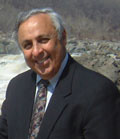|
 US
FDA : The 510(k) - Part I US
FDA : The 510(k) - Part I
Let
us first solve the mystery of its name.
The “510(k)” name simply comes from that section of the Federal
Food, Drug and Cosmetic Act (FD&C Act).
Here is what Sec. 510(k) and Sec. 510(n) say:
Sec.510(k) Each person
who is required to register under this section and who proposes to begin
the introduction or delivery for introduction into interstate commerce for
commercial distribution of a device intended for human use shall, at least
ninety days before making such introduction or delivery, report to the
Secretary (in such form and manner as the Secretary shall by regulation
prescribe)
-
the class in which
the device is classified under section 513 or if such person
determines that the device is not classified under such section, a
statement of that determination and the basis for such person's
determination that the device is or is not so classified, and
-
action taken by such
person to comply with requirements under section 514 or 515which are
applicable to the device.
Sec. 510(n) The Secretary
shall review the report required in subsection (k) and make a
determination under section 513(f)(l) not later than 90 days after
receiving the report.
Laws, by their nature,
only briefly describe the broad requirements. In this case,
subsequent laws also added to the requirements. Regulations were also
proposed and finalized in the Code of Federal Regulations (CFR) in order
to add more specific requirements. For example, Sec. 510(k) only
mentions that a person intending to introduce a device into the marker
shall “report to the Secretary” but does not say anything about the
nature of the report. The “Secretary” is the Secretary of the
Department of Health and Human Services. The FDA Commissioner
reports to the Secretary and is given the authority to develop necessary
regulations. (See Archives)
For medical devices,
these regulations are developed in the Center for Devices and Radiological
Health (CDRH). Some medical devices, such as in vitro diagnostics that
help assure the safety of the blood supply, are regulated by
the Center for Biologics Evaluation and Research (CBER) or jointly.
These Centers also help the manufacturers by publishing guidance documents
to further explain the regulations. Rather than try to decipher the
specific language in the FD&C Act, we will move forward to discuss the
overall requirements.
Premarket
Notification
Section 510(k) of the
FD&C Act requires anyone who intends to market a medical device in the
United States intended for human use to submit a premarket notification (a
“510(k)”) to the Agency at least 90 days before introducing the device
onto the market (unless, of course, the device has been exempted from this
requirement by the FDA). This Premarket Notification is the
“report to the Secretary” noted in the FD&C Act above.
THE PREDICATE
DEVICE
The FDA will review the
submission to determine whether the device is “substantially
equivalent” (SE) to a device “legally marketed” in the United States
that is not subject to premarket approval (PMA) requirements. The
overall purpose of the submission is to demonstrate to the FDA that the
new device is as safe and effective as the legally marketed device to
which it is being compared. This is what we mean when we say that
the new device is “substantially equivalent” to the “predicate
device”.
Back
| Back To Top | Next Page
|